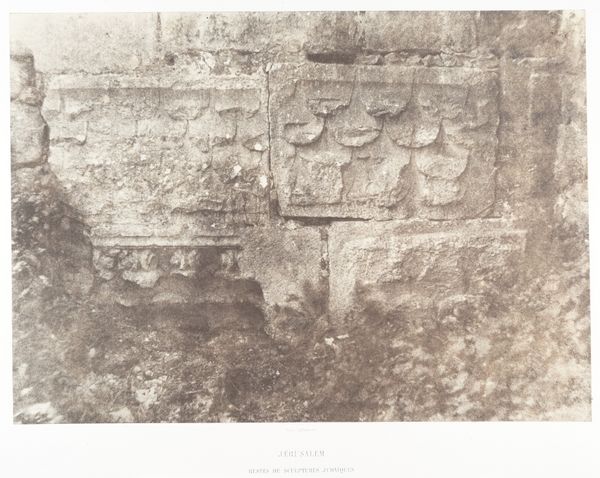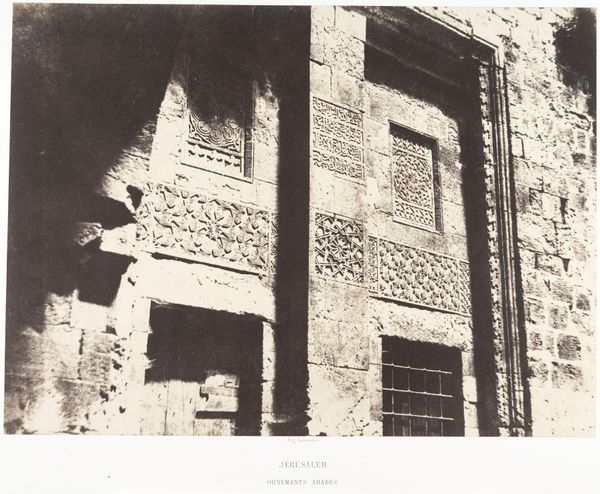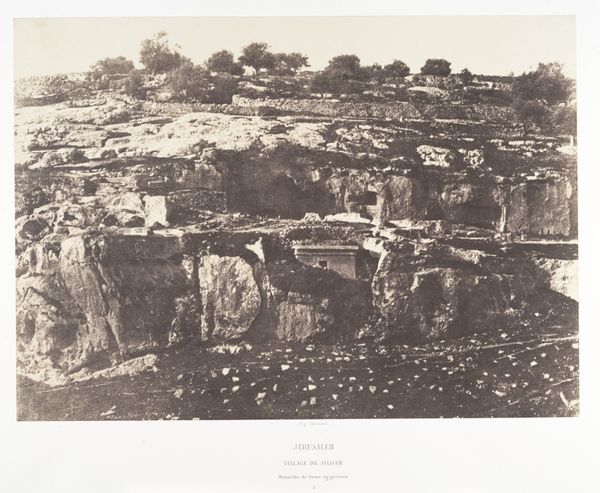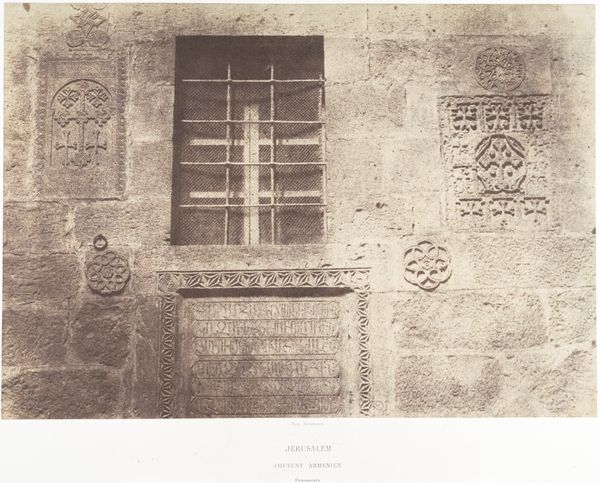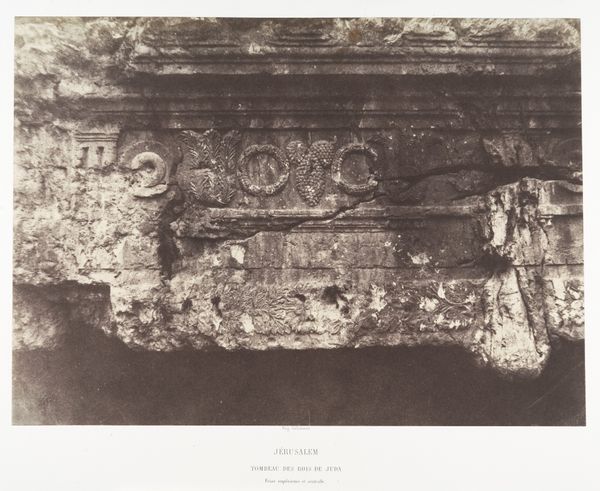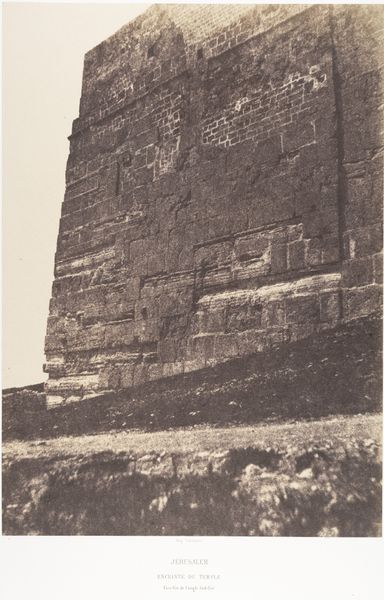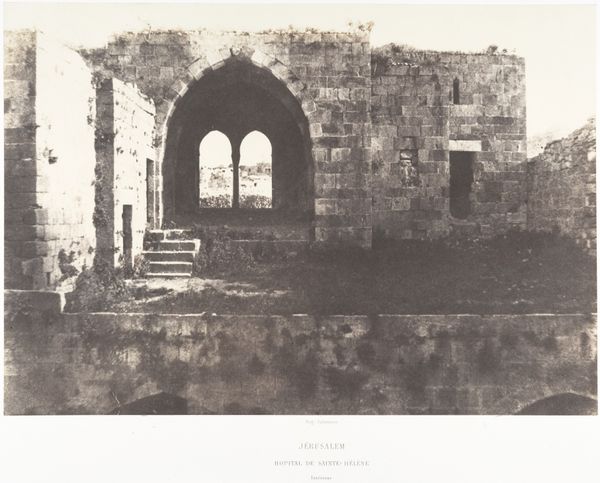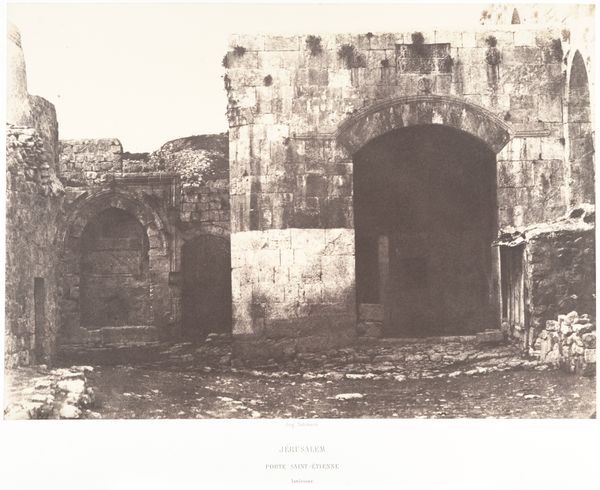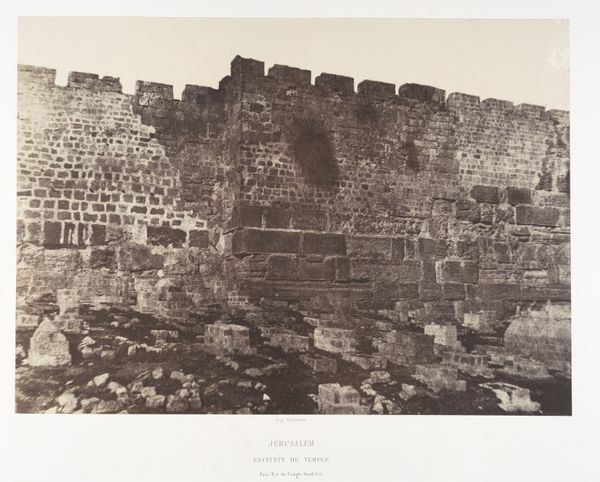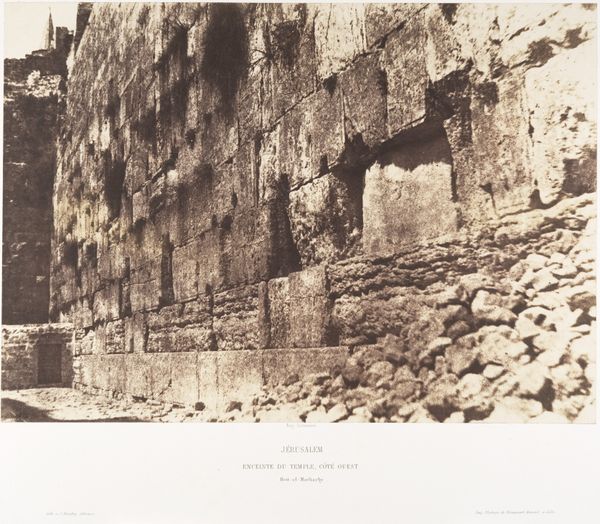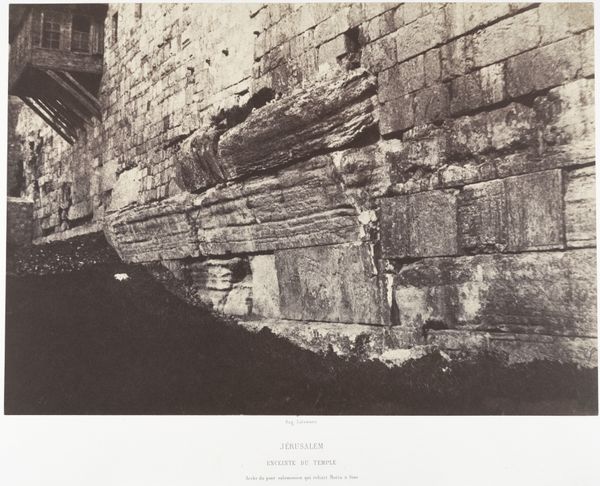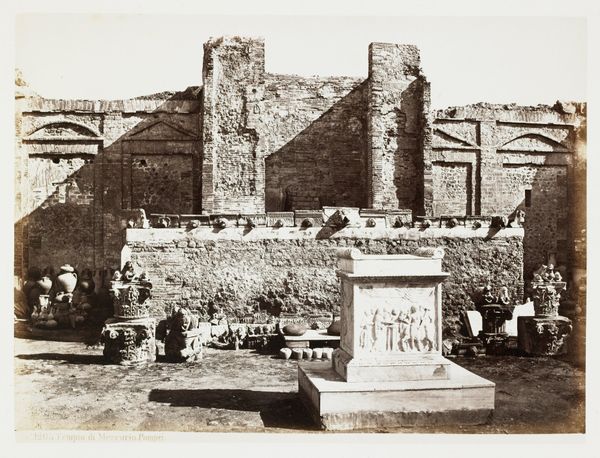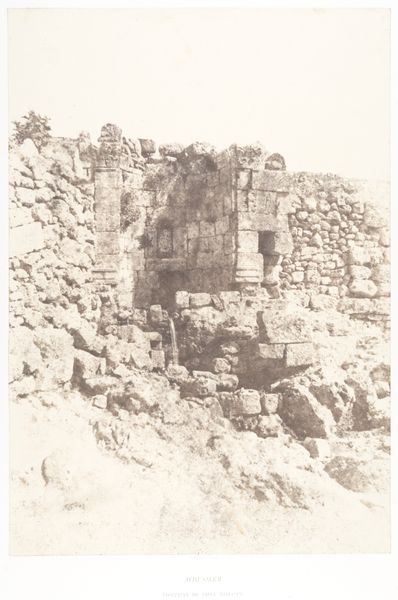
Jérusalem, Aqueduc de Ponce-Pilate, Inscription 1854 - 1859
0:00
0:00
daguerreotype, photography, architecture
#
landscape
#
daguerreotype
#
photography
#
ancient-mediterranean
#
islamic-art
#
architecture
Dimensions: Image: 22.8 x 32.8 cm (9 x 12 15/16 in.) Mount: 45 x 59.4 cm (17 11/16 x 23 3/8 in.)
Copyright: Public Domain
Editor: So, here we have Auguste Salzmann’s, “Jérusalem, Aqueduc de Ponce-Pilate, Inscription,” a daguerreotype, made sometime between 1854 and 1859. It's quite a stark image of stone and inscription. I am really drawn to its almost otherworldly quality, even if it just depicts a fragment of a wall. What’s your take? Curator: You know, looking at this image, I’m struck by how Salzmann captures time itself. It's more than just a document. This is Jerusalem; this inscription isn’t just text, it's history etched in stone. The aqueduct speaks of power – Roman, perhaps? – and then, overlaying it, this elegant script, whispering of a different era, another faith. Notice how the light catches the carvings? It feels almost accidental, a moment stolen from eternity, doesn’t it? Editor: That's beautiful! The "stolen moment" really resonates with me. But does it say something, perhaps, about photography's capacity to freeze a transient moment against the immutable backdrop of ancient structures? Curator: Precisely! The very texture, that almost ghostly graininess unique to daguerreotypes, lends it that timeless quality. This is no pristine, digitally-rendered vision. It has age, wear, and that in turn makes us really think. The past layered upon the present…Do you sense a trace of melancholy in the overall tone? Editor: Now that you mention it, yes! A quiet kind of melancholy. It is probably coming from those subtle tones…and that weathered stone with vegetation reclaiming the site...What do you think people at the time made of these photos of the Holy Land? Curator: What a great question! Perhaps it felt revelatory. These photographic glimpses gave access, tangibility, a touch, however mediated, of the ‘real’ Jerusalem. In a world yet untouched by mass tourism. They have so much potential! Editor: This has definitely changed the way I see the image. I guess the convergence of history, photography, and interpretation gives it such a striking complexity! Curator: Indeed! Each glance unravels more than what meets the eye at first.
Comments
No comments
Be the first to comment and join the conversation on the ultimate creative platform.
